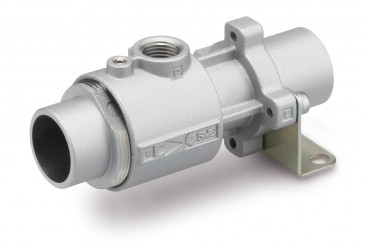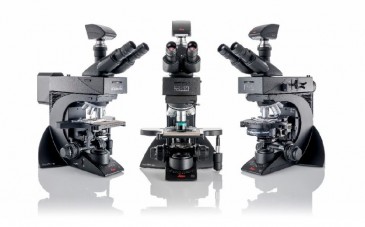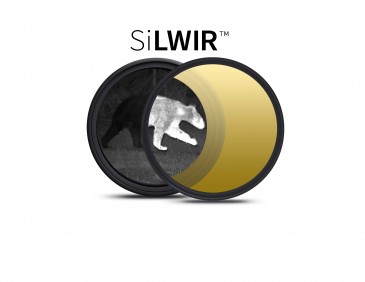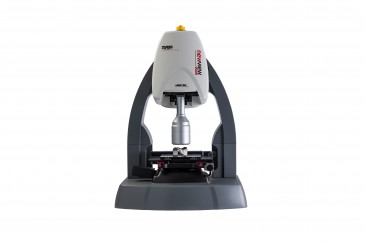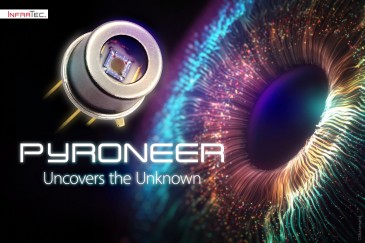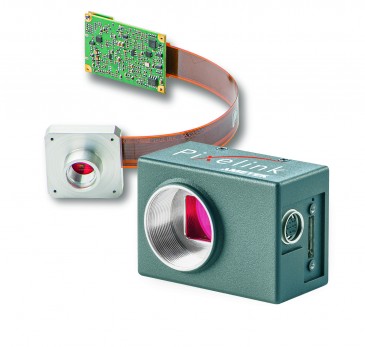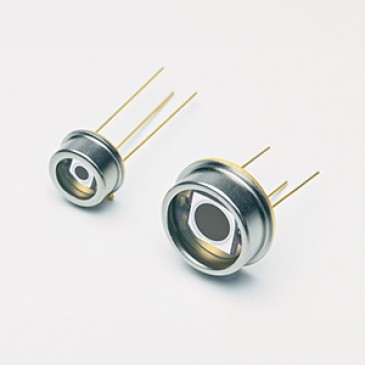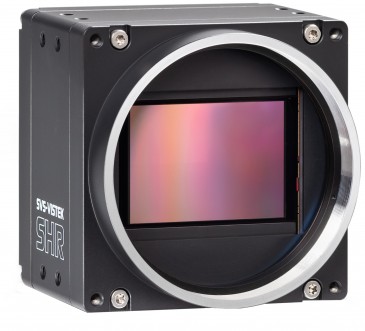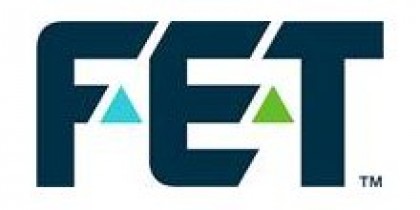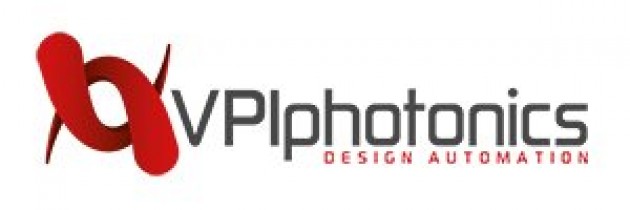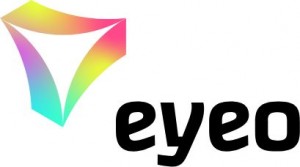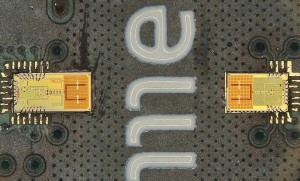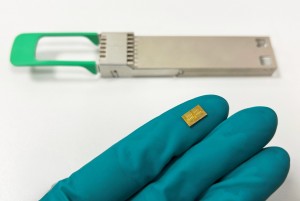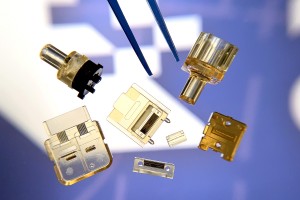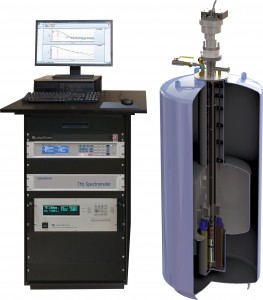
The continuing demand for higher performance, more compact computing and communications devices drives research of novel and previously unexplored materials. Various tools and techniques, such as Hall measurements and Raman and X-ray spectroscopy, have helped in characterizing these materials. Each of these techniques has its strengths as well as its shortcomings. Due to recent technological advances, the long-elusive terahertz frequency band has been showing the most promise for the future of semiconductor research and development.
The terahertz spectrum is fast emerging as a new frontier for materials science. Stimulating materials using terahertz frequency radiation from 0.1 to 10.0 THz can reveal interesting material properties that other techniques miss, as many phenomena have been found to align with these frequencies. Applying variable or extreme temperatures and magnetic fields has the potential to yield even more insights.
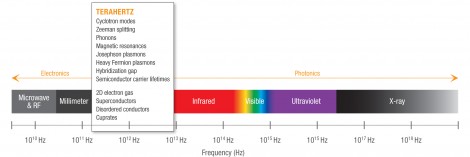
The terahertz (THz) frequency band lies between microwave and infrared waves on the electromagnetic spectrum, and aligns with many important properties of semiconductor materials.
While sources of terahertz energy have previously been limited, new technology has made reliable commercial measurement solutions using THz increasingly viable. Breakthrough results of particular interest have been achieved in the characterization of materials such as thin films and semiconductors, due in part to improvements in how THz is generated.
Previously, costly high-speed laser sources were needed to generate terahertz energy; newer systems have emerged, however, that can generate THz frequencies at a lower cost using frequency domain or “continuous wave” (CW) spectroscopy. Compared with traditional approaches, CW spectroscopy systems offer improved resolution (under 100 MHz) and greater flexibility in configuring characterization environments. The systems are also non-contact, non-destructive, and continuously tuneable over the THz range.
Spectroscopy in the cryogenic domain
The capability to analyze materials at cryogenic temperatures has long been recognized for its usefulness in isolating specific phenomena and behavior of materials. The cryogenic environment reduces noise inherent to electronic materials, thereby lessening its impact on the measurements obtained. Certain carrier transport properties, for example, are much easier to detect at very low temperatures. These properties include:
- Carrier scattering time in semiconductors (important to development of high-speed electronics, THz sensors, and solar photovoltaics)
- Vibrational resonances in molecular solids (important to chemical identification and research in organic electronic and magnetic materials)
- Antiferromagnetic resonances (important to spin-based computing)
Components used in CW spectroscopy must be able to maintain suitable performance while operating at cryogenic temperatures. This design challenge has been met using fiber-coupled, low temperature-grown gallium arsenide (LT-GaAs) photomixer packages, which have been shown to reliably operate over a temperature range of 4 K to room temperature.
Current research
Existing terahertz technology has already yielded insights into new materials, including the characterization of dielectric materials for high-frequency and waveguiding applications, chemical identification of different polymorphs in pharmaceutical applications, and non-contact measurements of mobility and doping levels in semiconductors.
THz characterization has historically been available only to a few well-funded and optics-savvy institutions. However, the emergence of commercially-viable solutions, such as Lake Shore’s turnkey THz materials characterization system, is enabling the pursuit of future high-speed computing, storage, imaging and communications applications as well as offering encouraging new data to those studying chemical materials.
So far our partners at major research university and government research labs have used the system to study the THz response of various thin films and semiconductor materials and to perform temperature dependent studies of molecular solids.
What’s ahead for THz
THz-based characterization is expected to help researchers evaluate a wide array of novel electronic materials such as graphene, semiconductor heterostructures, and even high-temperature superconductors, as well as emerging magnetic materials such as complex oxide thin films. It can support the study of low-energy phenomena like rotational and translational resonances that occur at molecule metal interfaces. Because conventional optical and electronic spectroscopies provide only a partial picture of what is happening in a material, terahertz spectroscopy offers a new tool to explore these lower energy excitations.
For that reason, THz characterization will be a means to augment the information derived by conventional optical measurements performed by researchers on materials. For example, a researcher exploring new growth methods for a particular semiconductor already utilizes a host of conventional optical spectroscopy techniques to characterize his material – X-ray spectroscopy to learn information about crystal structure and UV-Vis or IR to determine the band gap. But the same researcher will also use THz spectroscopy, particularly when trying to determine temperature dependence, to gain insight into other mechanisms such as free carrier scattering in the material.
Lake Shore Cryotronics’ new 8500 Series CW-THz material characterization system will help reduce the time typically required to begin characterizing sample material. In addition to eliminating the hassle of making electrical contacts (for Hall characterization, for instance), the turnkey 8500 Series system also eliminates the complexities of constructing do-it-yourself cryogenic and high field platforms, aligning THz optics and writing control and analysis software so that users can immediately realize productive measurements of their materials. The new system allows researchers to focus more time on material study in pursuit of breakthrough results. And the turnkey system means that these new material discoveries can be made by a variety of researchers, not just those heavily involved in THz research.
As Moore’s Law predicts, the demand for increased communications speed, computing power, and data storage continues to grow, driving research into new materials that can support expectations of ever-doubling device performance. Terahertz characterization aligns with these increased performance needs and offers researchers an exciting and productive new way to study these materials and reveal their inherent properties.
Written by Scott Yano, Vice President of Product Development at Lake Shore Cryotronics, Inc. of Westerville, Ohio (US).





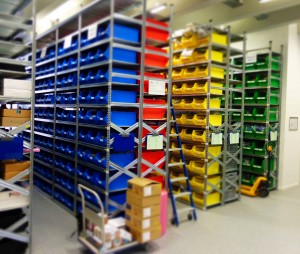


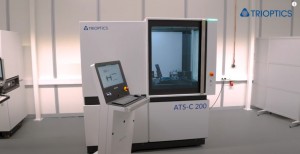
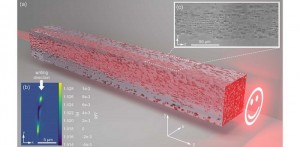
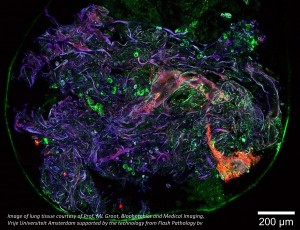

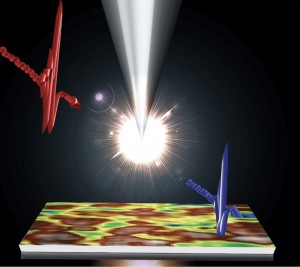
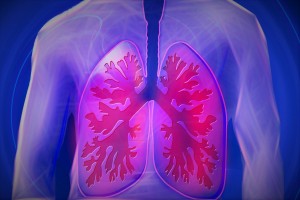
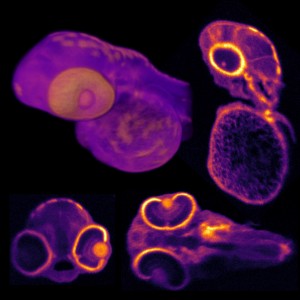
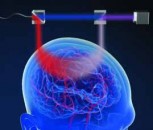

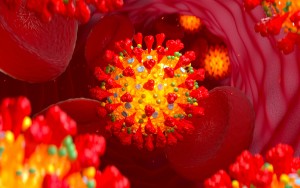















 Back to Features
Back to Features